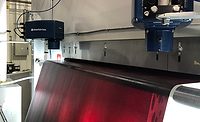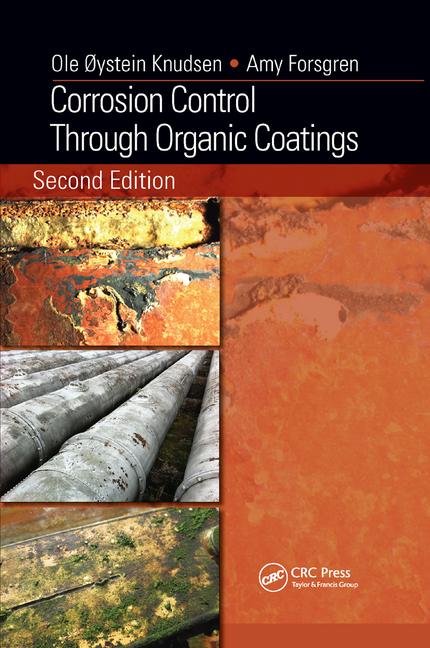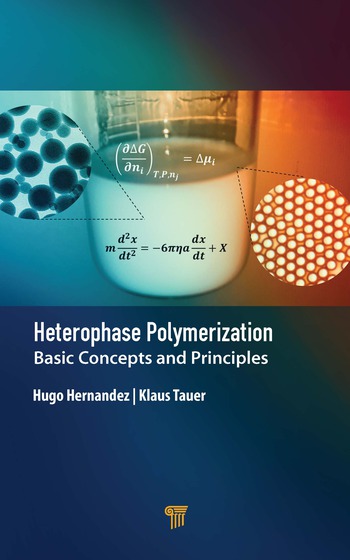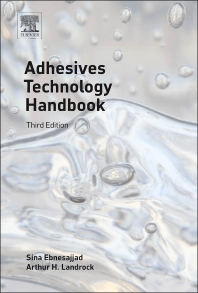Reducing Costs with Safety Ventilation
Properly analyzing ventilation air can lead to energy and cost savings.


Figure 1. When continuous LFL monitors are installed, the solvent vapor concentration in the oven can exceed 25% LFL. This allows operators to increase overall safety and productivity while reducing operating costs.

Figure 2. The combined sample line delay and the response time of the analyzer produce a 15 second total delay. By the time the analyzer activated its warning alarm set at 35% LFL, the true concentration in the process is already above 130% LFL.



Energy is a significant cost of production. As energy costs rise, it becomes more difficult to pass on the increases to customers in the price of products and
| Jump to: |
services. Regardless of current energy costs and trends, however, an energy-efficient process is more competitive.
Necessary Ventilation
Safe drying of solvents requires excess ventilation air. Extra air keeps vaporized solvents well below the concentration at which they might burn or explode. A lot of energy goes toward heating ventilation air to the drying temperature. For processes that use a thermal oxidizer for pollution control, much more energy is used to reach 1,500°F in order to destroy the volatile organic solvents.
Without an analyzer to monitor the solvent concentration, ventilation is four times the necessary amount to keep the maximum solvent load1 of the dryer below the lower flammability limit (LFL).2 Since the dryer rarely operates at its maximum rated load, the ventilation might often be 10 times the amount needed for the actual load.3
At least half of this ventilation air, and the cost of heating it, can be saved. With an analyzer to continuously monitor the solvent concentration, the required ventilation is only two times what is needed to keep the actual solvent load of the dryer below the LFL.4 Ventilation can be adjusted for the typical solvent load, or even continuously adjusted to match the actual solvent load at any given time, so it is not necessary to heat a large excess quantity of ventilation air.
Common Ventilation Methods
Without an analyzer, the dampers must be fixed in position to provide enough ventilation to keep the solvent concentration below 25% LFL at the maximum solvent load. An increase in solvent concentration cannot be detected or adjusted, so no energy can be saved.
With a continuous solvent vapor analyzer, dampers can be adjusted. This can only be done by some means other than using the analyzer’s reading to modulate them—as long as the analyzer performs a safety shutdown before the actual solvent concentration can exceed 50% LFL. This approach saves energy; what’s more, if the process conditions rarely change, the savings can be significant.
With a continuous solvent vapor analyzer, dampers can be adjusted using the analyzer’s reading to modulate ventilation so that the solvent concentration can reach 50% LFL, as long as ventilation always remains above what is required for 50% LFL at the maximum solvent load. The analyzer must perform a safety shutdown before the solvent concentration can exceed 50% LFL. With an analyzer used for process control, the safety must come from providing a significant amount of ventilation air at all times, which limits the amount that the dampers can be adjusted. Additional energy savings is possible in some cases, but not all.
With one continuous solvent vapor analyzer to perform the safety shutdown function before the solvent concentration can exceed 50% LFL, a second analyzer can be used to modulate the dampers so that the solvent concentration can reach 50% LFL. This produces the maximum energy savings, especially when process conditions vary. The analyzer used for process control is backed up by an analyzer used exclusively for safety. This provides an extra failsafe condition.
Safety and Consistency
For any cost savings to be obtained safely, the analyzer must be used properly. After all, the ventilation air provides a margin of safety to lower the chance of fire or
For any cost savings to be obtained safely, the analyzer must be used properly. |
explosion. Without an analyzer, a higher margin of safety (i.e., more ventilation) is required. With an analyzer, it is acceptable to reduce ventilation by at least half. But failure in the analyzer must not be allowed to increase risk. The safety shutdown analyzer must be independent of the basic process control system.5
Whether the measurement is made to control ventilation or to perform a safety shutdown, an accurate measurement requires a fast and consistent analyzer. For every second that the analyzer lags behind, the actual solvent concentration can be climbing much higher than the reading made by the analyzer. This “dynamic error” in measurement is the most significant reason for failure to give an alarm following a sudden upset. Solvent can rise 10% LFL, 20% LFL, or more each second following a sudden upset. If the measurement lags five seconds, the process can be already above 100% LFL without an alarm.
Consistency means that the analyzer should measure all the solvents equally. A wide disparity in the response to one solvent compared to another will cause the analyzer to exaggerate the actual concentration and cause excess ventilation. It is not uncommon for some analyzer types to read one solvent twice as high as another. Clearly, such an analyzer will not be able to signal for a 50% reduction in ventilation—it could instead signal for a 50% increase in ventilation.
For more information, contact Control Instruments Corp. at (973) 575-9114, email sales@controlinstruments.com or visit www.controlinstruments.com.
Footnotes
1. Solvent load (e.g., “pounds per hour” of solvent).
2. NFPA-86 Ovens and Furnaces requires ventilation so that the solvent concentration cannot exceed 25% LFL (worst case) at the maximum solvent load.
3. It is not uncommon for the actual concentration to be a fraction of the maximum load, so that % LFL concentrations might be 5-10% LFL during actual operation compared to 25% LFL for the maximum load.
4. NFPA-86 allows operation up to 50% LFL if a continuous solvent vapor analyzer is used, compared to 25% LFL without an analyzer.
5. See ISA SP84 or IEC 61511 Safety Instrumented Systems. The safety shutdown system and the process control system must be separate and independent. One analyzer can perform either a process control function or a safety function, not both. Otherwise, a single failure in one analyzer could take the dryer out of a safe operating condition and at the same time fail to perform a safety shutdown.
Looking for a reprint of this article?
From high-res PDFs to custom plaques, order your copy today!










